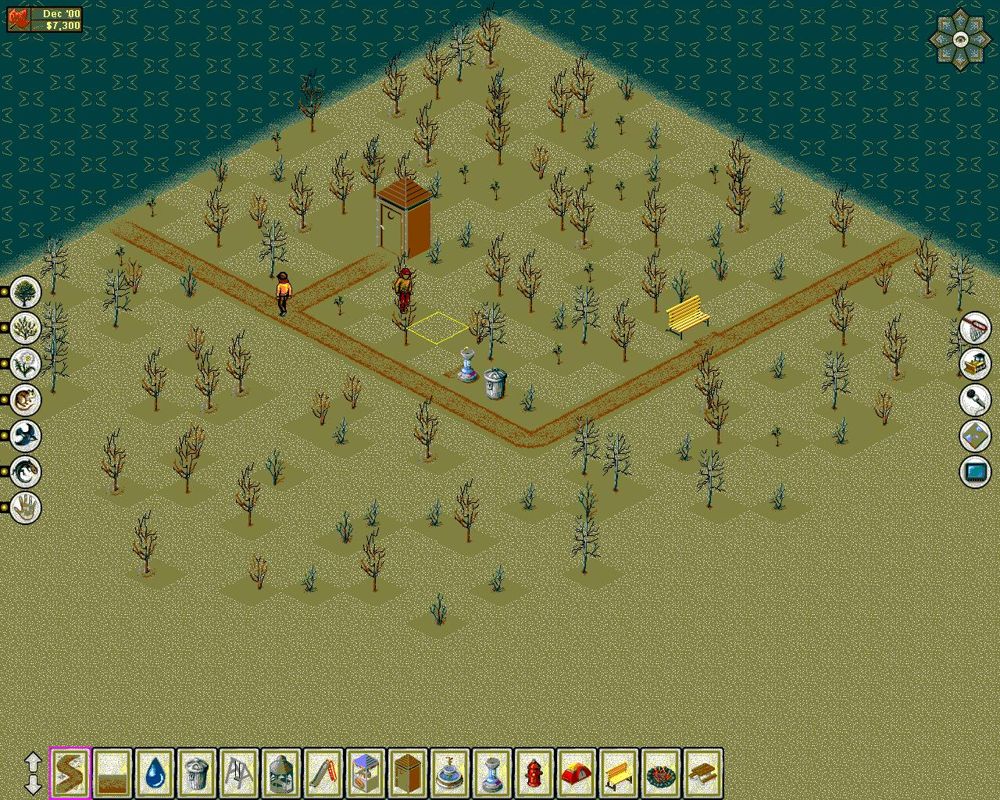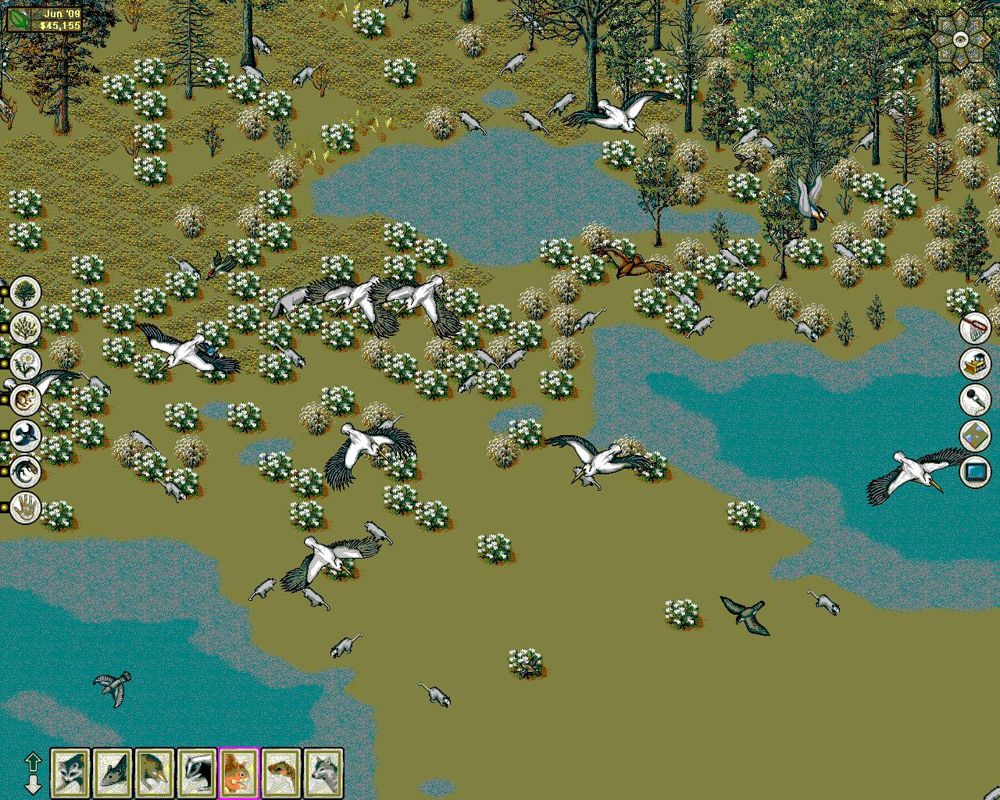Retro Replay Review
Gameplay
SimPark delivers a deep and engaging simulation experience that places you at the helm of a wildlife sanctuary. You start with a barren plot of land and an ambitious goal: to cultivate a thriving ecosystem. From the outset, you’ll be choosing from hundreds of species of plants, mammals, birds, reptiles, and insects, each with its own unique environmental requirements. Your success hinges on understanding and balancing temperature, rainfall, soil type, and food sources to keep every creature healthy and happy.
One of the game’s standout features is its comprehensive species database. Each entry provides a scientific name, bio, habitat preferences, dietary needs, and even authentic audio clips of animal calls. This level of detail transforms what could have been a dry stat sheet into an interactive learning tool. As you study each entry, you’ll develop strategies to pair compatible plants and animals, anticipating migration patterns and seasonal shifts, which can dramatically alter the park’s dynamics.
Beyond ecosystem management, SimPark weaves in classic “Sim” gameplay elements such as budget control and visitor amenities. Federal funding and visitor fees finance your operations, but careless spending or poor environmental practices can lead to bankruptcy—and an abrupt end to your tenure as park manager. You’ll build trails, restrooms, and viewing stations, and even manage educational programs like species-identification mini-games to boost attendance and public awareness.
To keep gameplay fresh, SimPark lets you unleash natural and man-made disasters at will. Whether you trigger a raging wildfire, a kudzu overrun, or a bizarre alien invasion, these events test your park’s resilience and your ability to restore balance quickly. It’s an entertaining way to experiment with ecosystem recovery tactics, despite the occasional frustration of watching your meticulously cultivated habitat go up in flames.
Graphics
Although SimPark debuted in the mid-1990s, its graphics still possess a certain nostalgic charm. The top-down, isometric view offers a clear overview of your park, and the lush color palette brings greenery and wildlife to life. Trees, flowers, and animal sprites are rendered in simple yet appealing pixel art, balancing visual clarity with performance on modest hardware.
The user interface is emblematic of classic Maxis design: functional, icon-driven menus guide you through planting, animal placement, and budget analysis. While some modern players may find the UI a bit dated, its straightforward layout rarely poses a barrier to gameplay. Tooltips and on-screen alerts help you monitor temperature changes, rainfall, and visitor satisfaction, ensuring you stay informed without feeling overwhelmed.
Audio also plays a significant role in the immersion. Background ambient sounds—rustling leaves, bird calls, babbling brooks—create a serene atmosphere, interrupted only by the occasional alarm marking an ecological imbalance or budget shortfall. Authentic animal recordings from the database enhance the realism, making it a joy to wander the virtual trails of your own creation.
Story
SimPark doesn’t follow a traditional linear narrative. Instead, its “story” is emergent, driven by the dynamic interplay of flora, fauna, and human visitors. Each decision you make—whether introducing a keystone predator or rerouting a stream—leads to cascading effects that shape unique scenarios. The drama unfolds organically as you witness migration patterns, population booms, and occasional die-offs.
Through hands-on experimentation, you learn ecological principles such as food chains, habitat compatibility, and the consequences of overpopulation. The mini-games for species identification introduce an educational storyline thread, reinforcing the importance of scientific observation and data collection. It’s an educational subplot that underscores the game’s aim: to teach environmental stewardship through interactive play.
Though there’s no singular “hero’s journey,” you’ll form emotional attachments to the park’s inhabitants. Releasing a family of otters into a properly balanced wetland can feel as rewarding as any scripted victory. Conversely, watching a population collapse due to your oversight imparts a genuine sense of responsibility—one that many simulation games only hint at.
Overall Experience
SimPark stands out among “Sim” titles for its focus on ecology and wildlife management rather than urban development or interpersonal drama. It’s an ideal choice for players seeking a more contemplative, science-focused simulation that encourages thoughtful planning and environmental awareness. The blend of budgetary constraints, visitor management, and rich species data ensures hours of strategic gameplay.
While the graphics and interface reflect the game’s age, they remain functional and endearing, fostering a sense of nostalgia without severely hindering play. The emergent storytelling and educational mini-games add depth, making SimPark more than just a sandbox: it’s a living classroom. Even today, the lessons learned about ecosystem balance and species interdependence resonate strongly.
For potential buyers interested in conservation-themed simulations, SimPark is a standout title. Its unique combination of scientific detail, open-ended creativity, and classic “Sim” elements delivers a rewarding experience that both entertains and educates. If you’ve ever dreamed of running your own wildlife sanctuary, SimPark offers the perfect virtual playground.
 Retro Replay Retro Replay gaming reviews, news, emulation, geek stuff and more!
Retro Replay Retro Replay gaming reviews, news, emulation, geek stuff and more!









Reviews
There are no reviews yet.